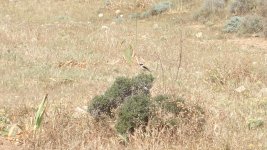Andy Adcock
Worst person on Birdforum

Please make allowances here, I'm not a scientist so my questions may be dumb.
Here in Cyprus, the black throated form of the above is regular but I can't find any information regarding the distribution of that form.
This form hasn't been alloted sub-specific status, how does this variation persist, there has to be a gene which is passed on? Where does that gene predomonate and why doesn't distinct, morphology, guarantee, sub-specific status?
Here in Cyprus, the black throated form of the above is regular but I can't find any information regarding the distribution of that form.
This form hasn't been alloted sub-specific status, how does this variation persist, there has to be a gene which is passed on? Where does that gene predomonate and why doesn't distinct, morphology, guarantee, sub-specific status?
Last edited:





